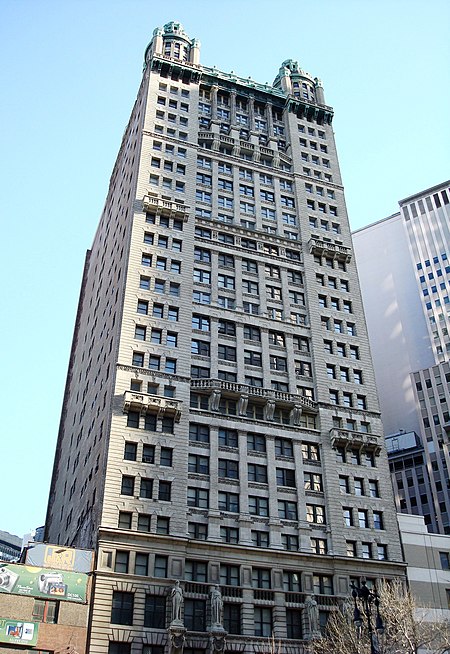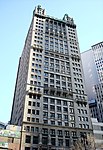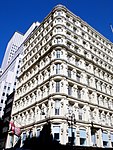Park Row (Manhattan)

Park Row is a street located in the Financial District, Civic Center, and Chinatown neighborhoods of the New York City borough of Manhattan. The street runs east–west, sometimes called north–south because the western end is nearer to the Financial District. At the north end of Park Row is the confluence of Bowery, East Broadway, St. James Place, Oliver Street, Mott Street, and Worth Street at Chatham Square. At the street's south end, Broadway, Vesey Street, Barclay Street, and Ann Street intersect. The intersection includes a bus turnaround loop designated as Millennium Park. Park Row was once known as Chatham Street; it was renamed Park Row in 1886, a reference to the fact that it faces City Hall Park, the former New York Common.
Excerpt from the Wikipedia article Park Row (Manhattan) (License: CC BY-SA 3.0, Authors, Images).Park Row (Manhattan)
Broadway, New York Manhattan
Geographical coordinates (GPS) Address Nearby Places Show on map
Geographical coordinates (GPS)
| Latitude | Longitude |
|---|---|
| N 40.711111111111 ° | E -74.008333333333 ° |
Address
222 Broadway
Broadway 222
10023 New York, Manhattan
New York, United States
Open on Google Maps










